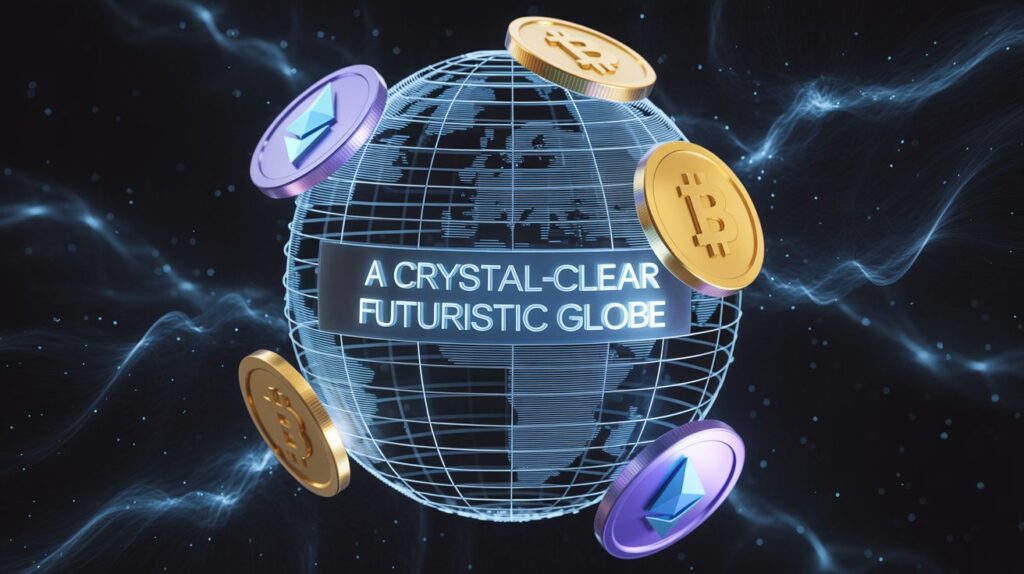Introduction to Stablecoins: Can you make money with Stablecoin?

What is Stablecoin?
The world of cryptocurrency, renowned for its exhilarating highs and stomach-churning lows, has long presented a fundamental paradox: how to harness the transformative power of blockchain without succumbing to its inherent volatility. Enter stablecoins—a groundbreaking innovation designed to bridge this very chasm. For crypto investors, understanding stablecoin is no longer optional; it is paramount to navigating the evolving digital finance landscape. These digital tokens, pegged to less volatile assets like fiat currencies or commodities, are rapidly cementing their role as the backbone of the crypto economy, influencing everything from daily transactions to geopolitical power plays.
This cornerstone article will provide a compelling, professional, and comprehensive deep dive into stablecoins. We will unpack their mechanisms, explore their burgeoning applications, analyze the intricate regulatory landscape, and candidly assess the risks and opportunities they present. Drawing on the latest information and expert insights, this guide aims to equip you, our savvy crypto investment readers, with the knowledge to understand why stablecoins are not just a crypto niche, but a pivotal force reshaping global finance.
The Quest for Stability in a Volatile World
Stablecoins are a unique class of cryptocurrencies designed to counter the extreme crypto volatility that often defines digital assets like Bitcoin and Ethereum. While traditional cryptocurrencies can experience dramatic price swings within hours, stablecoins maintain stability by pegging their value to more predictable assets; most commonly fiat currencies such as the US Dollar (USD), or sometimes commodities like gold. This ability to provide consistent value explains why many investors and institutions now view them as the best stablecoins for stability in an otherwise unpredictable market.
One of the most important benefits is how stablecoins reduce crypto volatility while still leveraging blockchain innovation. Their design makes them ideal for real-world use cases like fast cross-border transactions, everyday digital payments, and acting as a secure store of value during uncertain times. For traders, stablecoins often serve as a safe haven when market swings become extreme. For new users and institutions, they act as a gateway, easing the transition into blockchain by offering reliability and trust.
In essence, stablecoins in cryptocurrency adoption represent a crucial step toward mainstream acceptance of digital assets. By offering predictability in a turbulent market, stablecoins bridge the gap between the traditional financial system and the decentralized economy, enabling wider use of cryptocurrencies without the burden of constant price instability.
Main Types of Stablecoin: Diverse Mechanisms for Pegging Value
The stablecoin landscape is not monolithic. Different stablecoins employ distinct mechanisms to maintain their peg, each with its own advantages and inherent trade-offs. These can be broadly categorized into three primary types, with several emerging sub-categories.
A. Fiat-Backed Stablecoin: The Centralized Majority
Fiat-backed stablecoins are by far the most prevalent and widely used type, forming the bedrock of the stablecoin market.
- Mechanism: The core principle is straightforward: for every stablecoin issued, an equivalent or greater amount of traditional fiat currency (like USD, EUR, or GBP) is held in reserve by the issuer. These reserves typically consist of cash, highly liquid cash equivalents such as short-term government bonds (e.g., US Treasuries), or even commercial paper. This 1:1 (or greater) backing aims to provide assurance that the stablecoin can always be redeemed for its pegged fiat value.
- Examples:
- USDT (Tether): The undisputed market leader, Tether’s USDT holds the largest market capitalization among all stablecoins. It has been instrumental in facilitating liquidity and trading in the crypto market.
- USDC (USD Coin): Issued by Circle, USDC is the second-largest fiat-backed stablecoin and has garnered significant trust due to its commitment to transparency.
- Key Characteristics:
- Centralized Nature: Fiat-backed stablecoins are inherently centralized. They are issued and managed by a specific company (e.g., Tether for USDT, Circle for USDC) that holds the reserve assets. This centralization brings certain efficiencies but also introduces counterparty risk and regulatory oversight.
- Transparency Concerns (and Solutions):
- USDT’s Journey: Tether has historically faced scrutiny from US regulators and the public regarding the composition and transparency of its reserves. While they have significantly improved their reporting, earlier criticisms stemmed from complex collateral compositions that included not just fiat and treasuries, but also corporate bonds, gold, and even Bitcoin. This complexity fueled concerns about the liquidity and solvency of their reserves.
- USDC’s Model: In contrast, USDC (issued by Circle and Coinbase) has actively embraced transparency. Circle holds its reserves primarily in US dollars held in segregated accounts at regulated US financial institutions and in short-term US government bonds. They regularly publish monthly attestations from independent accounting firms, providing clear insights into their reserve holdings. This proactive approach has earned USDC the moniker “Wall Street’s good boy” and positioned it favorably with regulators.
- Regulatory Compliance: The regulatory landscape is evolving rapidly. Recent proposals in the US, such as the “Clarity for Payment Stablecoins Act of 2023” (which built on earlier concepts like the GENIUS Act), emphasize that underlying assets for stablecoins should predominantly be dollar cash or highly liquid US Treasuries. This would necessitate adjustments for issuers whose reserves deviate from these strict requirements, potentially impacting USDT more significantly than USDC.
- Profitability Model: Issuers of fiat-backed stablecoins generate revenue primarily from the interest earned on their substantial fiat reserves. With rising interest rates on short-term government bonds and other cash equivalents, this can be a highly lucrative business model. For instance, Tether reported billions in profits, underscoring the immense profitability potential, even with a relatively small employee base.
B. Crypto-Backed Stablecoin: Decentralization in Focus
Crypto-backed stablecoins aim to achieve decentralization by using other cryptocurrencies as collateral, typically managed by smart contracts on a blockchain.
- Mechanism: Instead of fiat currency, these stablecoins are backed by a basket of cryptocurrencies. Due to the inherent volatility of crypto assets, a common practice is “over-collateralization.” This means that a user must deposit a value of cryptocurrency greater than the amount of stablecoin they wish to mint (e.g., depositing $150 worth of Ether to mint $100 worth of stablecoin). This buffer is designed to absorb price fluctuations in the underlying collateral and maintain the stablecoin’s peg. If the collateral value drops too low, it can be liquidated to maintain stability.
- Examples:
- Dai (DAI): Issued by MakerDAO, Dai is currently the largest and most prominent crypto-backed stablecoin by market capitalization. It was initially designed to be fully decentralized, backed by a variety of cryptocurrencies.
- LUSD (Liquidity USD): Backed exclusively by ETH, LUSD aims for a more purely decentralized and immutable stablecoin.
- Decentralization vs. Practicality: While designed for decentralization, the reality can be more complex. Dai, for example, has increasingly incorporated centralized fiat-backed stablecoins (like USDC, USDP, GUSD) and even US Treasuries into its collateral reserves to enhance stability and scalability. This introduces a degree of centralization, creating a hybrid model that balances the ideals of decentralization with practical stability needs.
C. Algorithmic Stablecoin: The Risky Frontier
Algorithmic stablecoins represent the most experimental and, historically, the riskiest category.
- Mechanism: These stablecoins do not rely on direct asset backing. Instead, they use complex algorithms and incentive mechanisms, often involving a dual-token system (one stablecoin, one volatile governance/utility token), to maintain their price peg. The algorithm attempts to control supply and demand: if the stablecoin’s price drops below its peg, the algorithm might burn stablecoins or issue governance tokens to reduce supply; if the price rises above the peg, it might mint new stablecoins to increase supply.
- Sustainability Issues and “Death Spirals”: The history of algorithmic stablecoins is fraught with failures. Their stability is highly dependent on consistent market demand and confidence in the algorithm. If demand dwindles or market conditions become extreme, the mechanism can unravel, leading to a “death spiral” where the stablecoin rapidly loses its peg and value.
- Examples of Failure:
- TerraUSD (UST): The most infamous example, Terra’s UST, designed to be pegged to the USD through its sister token LUNA, collapsed spectacularly in May 2022. This event wiped out tens of billions of dollars in market value and sent shockwaves throughout the entire crypto ecosystem.
- Other notable failures include Basis Cash, Empty Set Dollar, and Titan.
- Decentralization: Theoretically, algorithmic stablecoins are designed to be highly decentralized, as their operation relies on code rather than central entities. However, this decentralization doesn’t inherently guarantee stability.
D. Other Categories of Stablecoin
Beyond the main three, other stablecoin types exist:
- Partially Algorithmic/Partially Collateralized: Some stablecoins, like Frax (FRAX), initially combined algorithmic principles with asset collateralization. Frax, however, has been actively shifting towards a more fully crypto-collateralized model in response to market events and regulatory scrutiny.
- Commodity-Backed: These stablecoins are pegged to the value of physical commodities, most commonly precious metals like gold. Examples include Paxos Gold (PAXG) and Tether Gold (XAUT), which claim to be backed by physical gold reserves.
- Non-Pegged Crypto-Backed (Rebases): A less common and more niche category, these crypto-backed tokens (sometimes called “rebasing tokens”) do not maintain a fixed peg but rather fluctuate in value based on supply and demand, with mechanisms to adjust supply. An example is Rai (RAI).
The Stablecoin Trilemma: Balancing Stability, Decentralization, and Capital Efficiency
Just as the broader blockchain ecosystem faces a “trilemma” concerning security, decentralization, and scalability, stablecoins grapple with their own inherent trade-offs. The Stablecoin Trilemma involves:
- Stability: The ability to consistently maintain a tight peg to the underlying asset, even amidst market volatility.
- Decentralization: Operating without a central authority, minimizing single points of failure and censorship risk.
- Capital Efficiency: Maximizing the utility of collateral (e.g., requiring minimal over-collateralization for crypto-backed stablecoins) or operating without the need for extensive reserves (as in theoretical algorithmic models).
In practice, any stablecoin design typically has to sacrifice one aspect to optimize for the other two. Fiat-backed stablecoins prioritize stability and capital efficiency (1:1 backing) but are centralized. Fully decentralized crypto-backed stablecoins might achieve decentralization and stability but often at the cost of capital efficiency (requiring over-collateralization). The ongoing “race” in stablecoin design is an attempt to innovate and optimize for all three, though a perfect solution remains elusive.
Why Stablecoins are Important and Their Advantages: Bridging Traditional and Digital Finance
Stablecoins offer compelling advantages over both volatile cryptocurrencies and traditional financial systems, driving their rapid adoption and attracting significant attention from governments, corporations, and diverse economic sectors.
A. Key Advantages:
- Convenience and Speed: “Stablecoins can be transferred globally in a few seconds, with relatively low fees.” This stands in stark contrast to traditional cross-border bank transfers (like SWIFT), which can incur fees exceeding 5% and take days to settle. Operating on a blockchain, stablecoins inherently eliminate cross-border, exchange rate conversion, and complex bank reconciliation issues, enabling near-instant, minute-to-minute transfers at significantly lower costs.
- Anonymity/Privacy (Pseudonymity): Stablecoin transactions can occur without revealing personal identities, similar to the pseudonymous nature of other cryptocurrencies. While transactions are publicly recorded on the transparent blockchain ledger, the identities linked to wallet addresses remain private unless explicitly revealed or linked through KYC/AML processes on centralized exchanges. This blend of pseudonymity and stability makes them “an ideal trading currency” for many.
- Stability: This is their defining advantage. By mitigating the wild price swings characteristic of assets like Bitcoin and Ethereum, stablecoins become practical for everyday payments, long-term transactions, and acting as a reliable unit of account within the crypto ecosystem.
- Efficiency for Blockchain Transactions: Traditional fiat currencies cannot directly interact with blockchain-based decentralized applications (dApps) or smart contracts. Stablecoins seamlessly bridge this gap, allowing for smooth and efficient transactions within the broader crypto and DeFi landscape.
- Market Growth and Volume: The statistics underscore their phenomenal rise.
- The total global stablecoin volume has surged, exceeding $250 billion in market capitalization (though it fluctuates with market conditions), representing a more than 20-fold increase in just five years.
- In 2024, stablecoin transaction volume was a staggering $27.6 trillion, surpassing the combined payment volume of Visa and Mastercard. This monumental figure highlights their powerful monetary attributes and immense potential to revolutionize global payments.
B. Key Use Cases and Economic Activities: From Remittances to RWA Tokenization
Stablecoins are rapidly integrating into various facets of the global economy:
- Cross-Border Payments: This is perhaps the most rapidly growing and impactful application. “About a year and a half ago, stablecoin cross-border payment applications were almost zero, but now they have reached approximately $50 billion per month,” exhibiting a robust 20-30% monthly growth. This taps into a massive global market for remittances and international trade, estimated at $200 trillion annually, attracting significant interest from major traditional players like Amazon, Walmart, and JD.com.
- High-Inflation Countries: In nations grappling with hyperinflation and stringent foreign exchange controls (e.g., Argentina, Nigeria, Brazil, Turkey), stablecoins pegged to stable currencies like the USD act as a vital “digital dollar.” Citizens use them for daily transactions, payments, and to escape the devastating effects of local currency depreciation. While governments initially resisted, strong public demand has led to increasing embrace. Brazil, for instance, has integrated stablecoins into its official PIX payment system.
- Real World Assets (RWA) Tokenization: Stablecoins themselves are a foundational form of RWA tokenization, transforming real-world assets (like USD) into digital tokens on a blockchain. This concept extends broadly to tokenize diverse assets such as real estate, bonds, intellectual property, and investment funds. BlackRock, the world’s largest asset manager, notably launched its USD money market fund (BUIDL) on the Ethereum blockchain, quickly attracting $2.9 billion in assets. This significant development underscores the growing convergence of traditional finance with blockchain technology, with stablecoins serving as a key facilitator.
- Payment Systems: Mainstream online payment giants are integrating stablecoins. PayPal launched its own stablecoin, PayPal USD (PYUSD), and Stripe, a major payment processor, supports stablecoin payouts. Newer applications like OKX Wallet’s OKXPAY enable instant stablecoin transfers via QR codes, mirroring the convenience of popular mobile payment systems like Alipay.
- Illicit Activities: It’s important to acknowledge that the attributes of stablecoins—stability, speed, and pseudonymity, can also make them attractive for illicit activities, including money laundering and black-market transactions. This aspect is a significant driver of regulatory concern.
Regulatory Landscape and Geopolitical Implications: The Battle for Digital Currency Hegemony
The meteoric rise and transformative potential of stablecoins have galvanized governments worldwide to accelerate regulatory efforts. These efforts are not merely about risk mitigation but are deeply intertwined with strategic and geopolitical motivations.
A. Global Regulatory Trends:
- Increasing Legislation: A growing number of countries and regions, including the US, EU, Singapore, the UK, South Korea, and Hong Kong, are actively developing or have already enacted stablecoin-specific legislation.
- Standardization Efforts: Emerging regulations often focus on:
- Licensing: Requiring issuers to obtain specific licenses.
- Reserve Requirements: Mandating 100% backing with high-quality, liquid assets (e.g., cash, short-term government bonds).
- Risk Management & Disclosure: Requiring robust risk management frameworks and transparent information disclosure.
- AML/CTF: Implementing strict Anti-Money Laundering and Counter-Terrorist Financing measures.
- US Approach (e.g., “Clarity for Payment Stablecoins Act”): Building on earlier concepts like the “GENIUS Act,” proposed US legislation aims to establish a comprehensive framework for stablecoin issuance. Its core tenet is to allow regulated institutions or individuals holding US dollar cash or highly liquid short-term US Treasuries to issue equivalent stablecoins as collateral. This potentially bypasses traditional bank intermediation, lowers barriers to entry, and fosters financial innovation. It facilitates instant, near-zero-fee, transparent, and secure cross-border settlements, with the strategic intent for USD stablecoins to become a core part of the global financial infrastructure.
- Strategic Intent: Reconstructing Monetary Influence: The US views stablecoins as a critical tool to “reconstruct the infrastructure of monetary influence in the digital economy era.” By championing USD-pegged stablecoins, the US aims to:
- Maintain and Strengthen the Dollar’s Dominance: Despite the theoretical possibility of stablecoins being pegged to any currency, “actually 99% of the market is still US dollar stablecoins.” Widespread adoption of USD stablecoins in non-dollar countries could lead to de facto dollarization, significantly expanding the dollar’s global reach and reinforcing its international status. US Treasury Secretary Janet Yellen has explicitly stated the government’s intent to “use stablecoins to maintain the dominant position of the US dollar.”
- Increase Demand for US Debt: The proposed US legislation (and current market practice) requires stablecoin reserves to be predominantly held in high-quality assets, overwhelmingly short-term US Treasuries. This means that every stablecoin issued effectively increases demand for US government debt, providing broader support for US fiscal financing. Tether, for instance, was reportedly among the top 20 largest buyers of US Treasuries in 2024. Projections from entities like JPMorgan suggest stablecoin demand for short-term US Treasuries could exceed $1 trillion by 2028.
- Dominate the Crypto World: Recognizing that the crypto world is not a fleeting trend, the US aims to “embrace it, preemptively legislate and regulate.” This strategy is about ensuring the US “not fall behind” and “not lose its global reserve currency status in this new battleground” of digital finance.
- Strategic Intent: Reconstructing Monetary Influence: The US views stablecoins as a critical tool to “reconstruct the infrastructure of monetary influence in the digital economy era.” By championing USD-pegged stablecoins, the US aims to:
- Global Regulatory Approaches – A Spectrum:
- Proactive and Open: Countries like Singapore, Hong Kong, and especially the UAE are actively embracing stablecoins. The UAE, with its attractive tax environment and encouragement of crypto companies, aims to enhance its status as a global financial hub. Hong Kong, for example, has launched a stablecoin regulatory sandbox and is pushing for HKD and offshore RMB stablecoins, involving major players like JD.com and Ant Group.
- Cautious but Inclusive: The US and EU fall into this category. The EU’s Markets in Crypto-Assets (MiCA) regulation, while a pioneering comprehensive framework, is notably cautious, prohibiting interest payments on stablecoin deposits and imposing strict daily transaction limits, citing risks to financial stability and monetary policy. South Korea, despite past losses from crypto collapses, has shifted from cautious skepticism to acceptance, with its new president supporting KRW stablecoins.
- Strictly Restrictive: Mainland China remains a prime example, with an outright ban on cryptocurrencies, focusing instead on its own central bank digital currency (CBDC), the digital yuan. Bangladesh and Afghanistan also maintain highly restrictive stances.
- The “If You Can’t Beat ‘Em, Join ‘Em” Mentality: A significant shift is observable as many traditional financial institutions and governments, initially resistant, are now actively entering the stablecoin market. JPMorgan, whose CEO Jamie Dimon famously called Bitcoin a “fraud” in 2017, now issues its own JPM Coin for wholesale payments. This profound shift reflects a global recognition that the trend towards digital assets and stablecoins is largely irreversible.
B. Stablecoin Impact on Traditional Finance: Disintermediation and Central Bank Concerns
Stablecoins, particularly in decentralized finance (DeFi), pose a fundamental challenge to traditional financial intermediaries like banks and payment companies.
- Disintermediation: DeFi platforms using stablecoins allow for peer-to-peer transactions and financial services (lending, borrowing, trading) that bypass traditional banks. While regulations often mandate 100% reserves for stablecoin issuers, theoretically funneling money back into the banking system, banks still stand to lose direct connections to users, flexibility in lending, and their historical role as primary intermediaries for payments and deposits.
- Central Bank Concerns: Central banks worldwide express concern about stablecoins’ potential to weaken their ability to conduct monetary policy effectively. If a significant portion of economic activity and money supply shifts to stablecoins outside traditional banking channels, central banks might lose tools to manage inflation, interest rates, and overall economic stability.
- Regulatory Hesitation: Regulators are currently grappling with how to define and categorize stablecoins. They often try to define them primarily as “payment stablecoins” to discourage their use as savings or investment vehicles, thereby attempting to avoid the complex issue of interest rate management and broader monetary policy implications.
Risks and Investor Considerations: Navigating the Nuances of Stability
Despite their promise of stability, stablecoins are not without significant risks and demand careful consideration from investors. It’s crucial to remember: “Stablecoins are not absolutely safe. It’s only relatively stable.”
- Collateral Risk & Transparency:
- Lack of Transparency: Some issuers, particularly in the earlier days (e.g., Tether’s historical opacity), have faced heavy criticism for insufficient transparency regarding their reserve assets. This leads to legitimate concerns about whether every circulating coin is truly fully backed.
- Composition and Liquidity of Reserves: The quality and liquidity of reserve assets are paramount. If reserves are not held in highly liquid, readily redeemable assets (like cash or short-term US Treasuries), a “run” on the stablecoin (where many holders try to redeem simultaneously) could lead to a “de-pegging” (deviation from their pegged value) or even a collapse due to inability to meet redemption demands.
- Centralization Risk: Even crypto-backed stablecoins, in their pursuit of stability, can sometimes incorporate centralized assets (like USDC for Dai’s reserves), which can compromise their decentralization ideals and introduce single points of failure.
- Algorithmic Flaws: The history of algorithmic stablecoins, particularly the infamous collapse of Terra’s UST, starkly illustrates the inherent instability of unbacked, algorithm-driven models. When market confidence erodes or demand dwindles, these can enter irreversible “death spirals.”
- Regulatory Uncertainty: The global regulatory landscape for stablecoins is still nascent, fragmented, and constantly evolving. This creates significant “cross-border policy uncertainty,” making it challenging for stablecoin projects to operate seamlessly across jurisdictions and complicating user rights protection and legal liability in cases of failure.
- Loss of Funds & De-pegging Events:
- Operational Risks: Beyond market-driven de-pegging, risks include technical vulnerabilities (hacker attacks, system flaws, concentration of computing power), outright embezzlement of funds (as seen with FTX), or issuer mismanagement.
- Real-World Examples: Even major fiat-backed stablecoins have experienced temporary de-pegging events during extreme market panic (e.g., USDT’s brief dip during the Terra/LUNA crash) or specific Black Swan events (e.g., USDC’s temporary de-peg during the Silicon Valley Bank collapse in March 2023 when a portion of its reserves were held there). These incidents serve as stark reminders that the peg is not immutable.
- Speculative Nature & Illicit Activities: Despite their “stability,” stablecoins operate within the broader crypto market, which remains susceptible to speculation. Their pseudo-anonymity and ease of global transfer also make them attractive tools for money laundering, terrorist financing, and other illicit activities, prompting significant regulatory scrutiny and efforts.
- Interest Conflicts: Stablecoin issuers profit from the interest earned on their substantial reserves. This can create potential conflicts of interest, especially if low interest rates on the underlying fiat currency incentivize issuers to invest in riskier, higher-yielding assets to boost profits, potentially compromising reserve quality.
For Individual Investors:
“Avoid blindly following trends.” Before considering any investment in stablecoins, enhance your financial literacy and risk identification skills. It is imperative to “understand the coin’s collateral mechanism, issuer background, technical architecture, and regulatory status.” Continuously monitor policy changes, especially sovereign regulatory approval and the assurance of independent third-party audits. In the absence of sufficient, verified information, “caution is not just asset protection, but also a necessary choice for ensuring personal financial security.”
Future Outlook: The Digital Dollar and a New Global Financial Order
Stablecoin stand at a historical juncture, poised to become a foundational method of global payment and value transfer within the next 5-20 years. They are expected to rapidly expand to trillion-dollar scales, permeating cross-border trade, online payments, interbank settlements, and even serving as a primary store-of-value, effectively becoming the central payment hub of the digital economy.
- Reshaping Currency Power: “Especially when the underlying anchored assets of stablecoins are strongly tied to the financial system of sovereign nations, it will bring about a new currency power landscape.” USD stablecoins, given their current dominance, are likely to increasingly replace some traditional currency functions globally, “further strengthening the dollar’s dominance” and extending its hegemony from traditional finance into the burgeoning digital financial realm. This represents a significant shift in how nations project monetary influence.
- Global Payment Standard: Within two decades, stablecoins could evolve into a universal standard for cross-border payments, akin to the HTTP standard that revolutionized the internet. This would drive unprecedented automation, efficiency, and institutional unification in global financial transactions.
- Geopolitical Tool and Competition: The expansion of stablecoins is far more than a mere technological upgrade; it represents a “realization of power projection and influence redistribution” on a global scale. It marks a “global competition where countries will not only contend for resources and data but also engage in comprehensive technological and institutional competition in the monetary field.” Nations will strive to develop their own digital currencies or devise strategies to manage (or counter) the expansion of other nations’ stablecoins, particularly those pegged to dominant fiat currencies.

The ascent of stablecoins is fundamentally reshaping the global financial order. Navigating this evolving landscape will require not only technological prowess and institutional wisdom but also unprecedented global coordination to realize the full potential of these digital assets while mitigating their inherent risks. For the discerning crypto investor, stablecoins represent a critical, albeit complex, piece of the future financial puzzle. Understanding their mechanics, advantages, risks, and the overarching geopolitical currents will be essential for making informed decisions in the years to come.







Pingback: Google, Coinbase, and Amex Unite: The New Google AI Payment Protocol (AP2) Bringing Stablecoins Into Mainstream Finance
Pingback: OKX Pay and StraitsX Partner with Grab Partner to Launch Singapore’s 1st Stablecoin Scan-to-Pay Service
Pingback: The Payment Giant’s Bold Pivot: SWIFT Shocking Move Into the Blockchain World